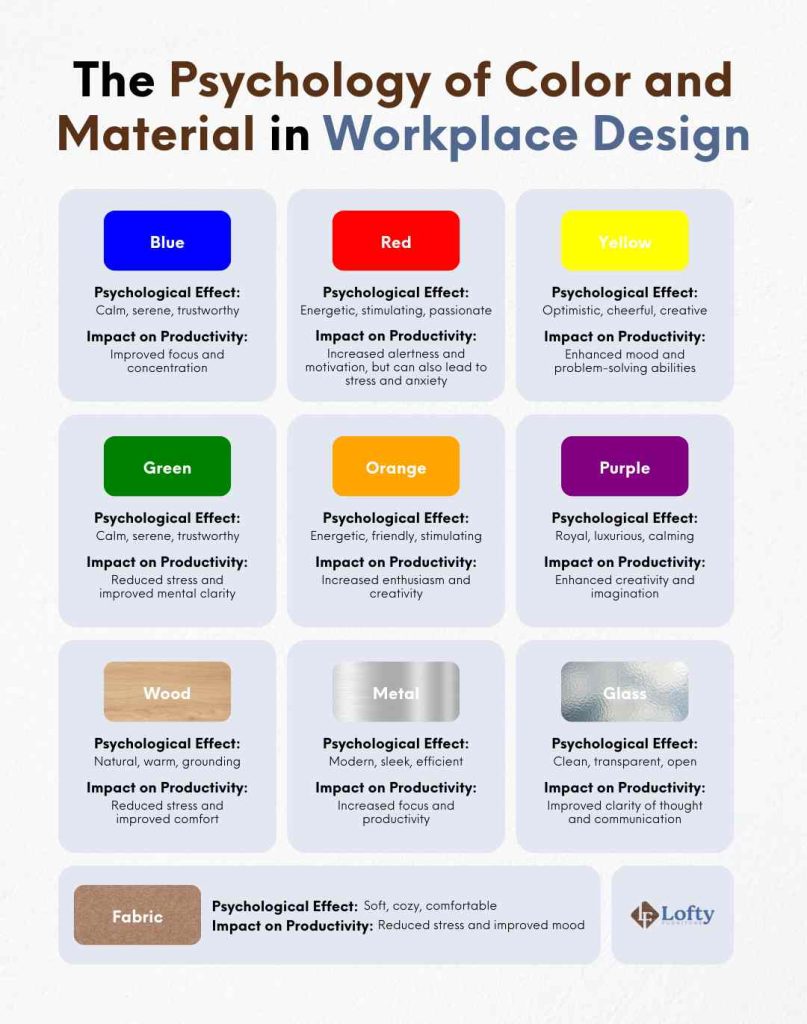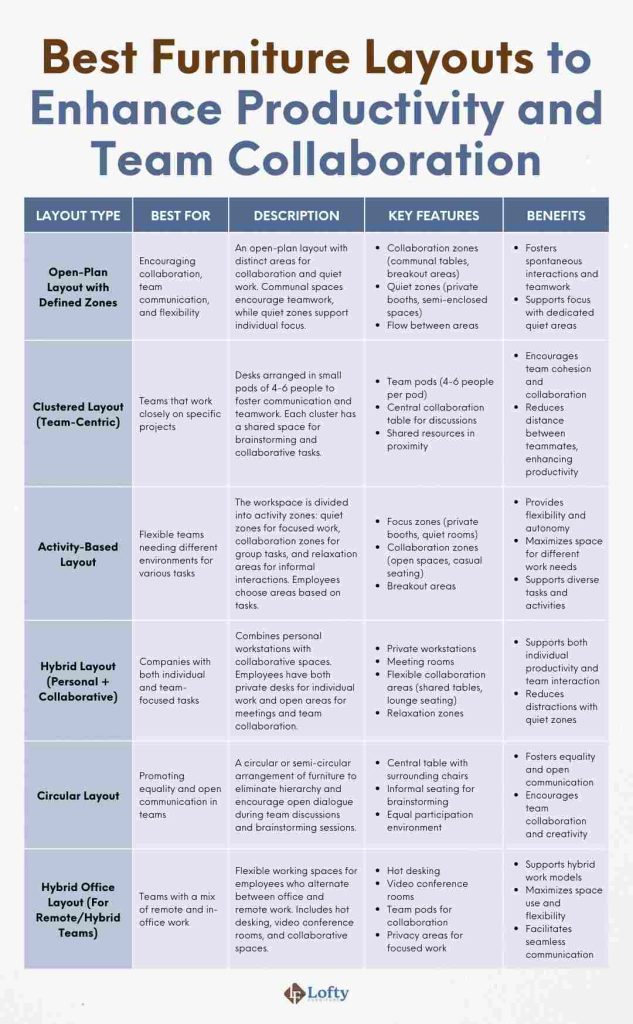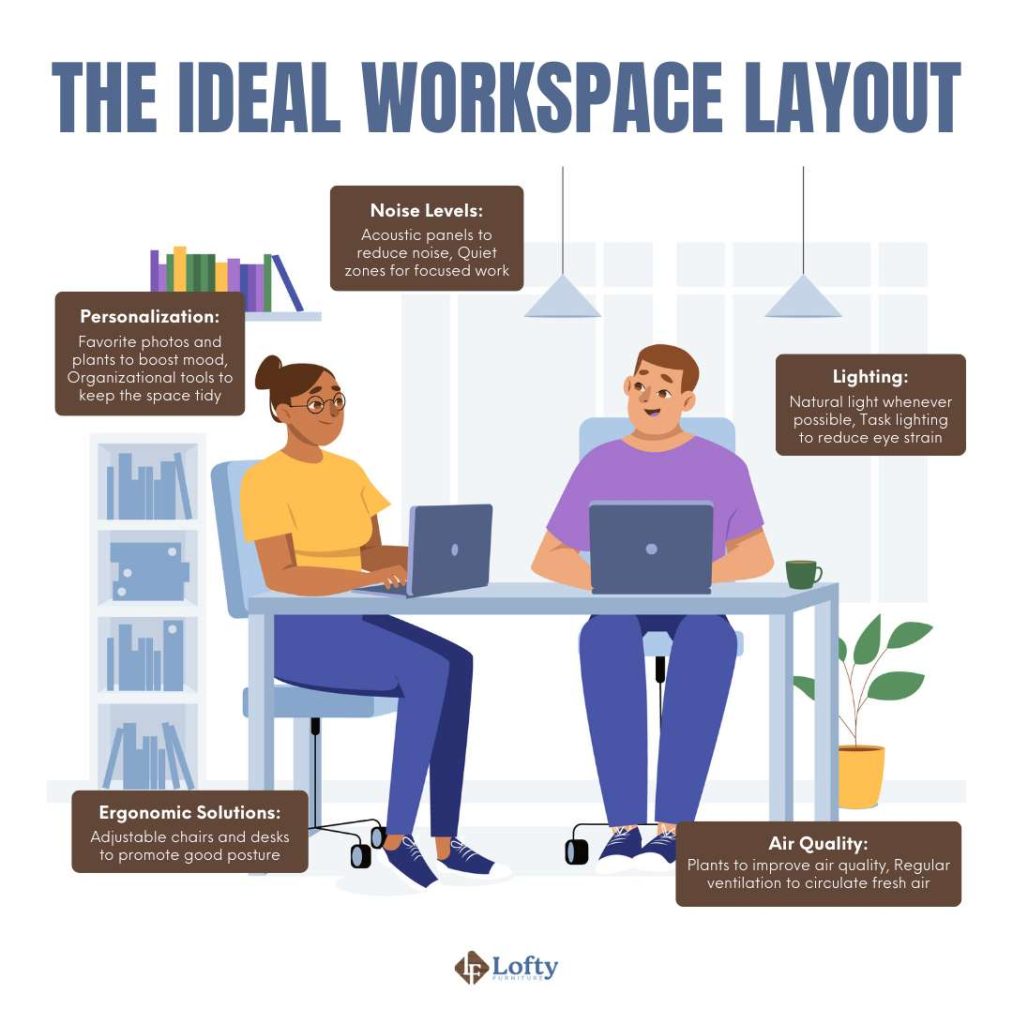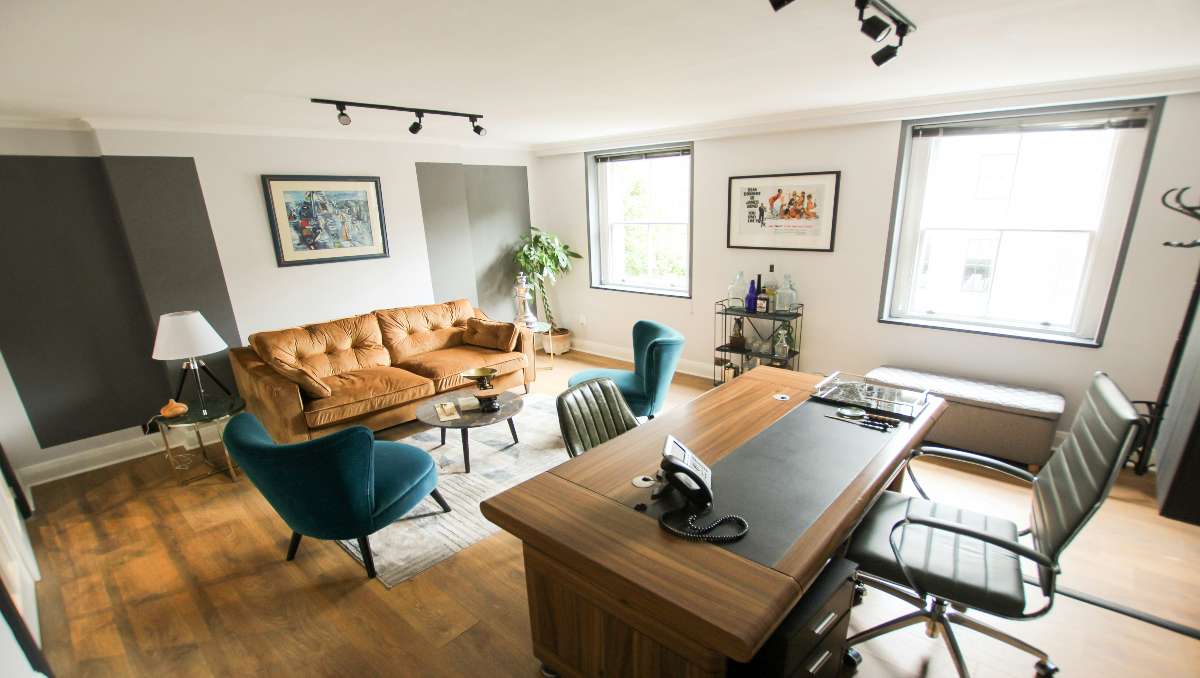The spaces we occupy—be it at home or work—have a profound impact on our well-being and productivity. Among the key elements shaping these spaces, workplace furniture plays a pivotal role. Beyond mere functionality, the right furniture can influence how we feel, think, and perform daily tasks. From ergonomic designs that enhance physical comfort to aesthetics that uplift our mood, every detail matters.
Key Takeaways
- Furniture impacts productivity and well-being. Thoughtful furniture choices directly enhance employee focus, creativity, and comfort.
- Ergonomics boost performance. Furniture that supports natural postures and encourages movement reduces strain, fatigue, and absenteeism.
- Colors and materials influence mood and flexible designs matter.
This article explores the intersection of furniture, well-being, and productivity, backed by compelling data and expert insights. We’ll also discuss how design choices can boost efficiency, reduce stress, and promote healthier lifestyles.
Ergonomic Furniture: How It Enhances Productivity and Comfort
Ergonomic furniture is specifically designed to support the human body, reducing physical strain and creating a more comfortable working environment. A study highlighted the critical impact of ergonomics on employee productivity, emphasizing that the absence of even one ergonomic element can negatively influence employees’ performance.
Elissa Hall, a visionary interior designer leading Airbnb Plus’s workspace innovations, articulates the importance of ergonomics:
“Ergonomic furniture is fundamental to productivity. When a workspace accommodates the natural posture and movements of users, it significantly reduces fatigue and discomfort, allowing employees to focus on their tasks for longer. For instance, I’ve seen clients who transition from traditional desks to adjustable sit-stand desks experience not just physical relief but a boost in mental energy—employees feel more in control of their comfort, which fosters a sense of autonomy that’s motivating in itself.”
Colors and Materials: Their Psychological and Productivity Impacts
The visual and tactile elements of furniture, such as colors and materials, wield significant influence over our psychological states. According to Forbes, studies have shown that colors don’t just alter moods; they can also affect productivity levels, making them a crucial consideration for both home and workplace environments.
John Brooks, a content specialist at Wahi.com, emphasizes the transformative power of these design elements:
“Colors and materials are typically the unsung heroes of productivity. Cooler hues, like blues and greens, have a relaxing impact, which is wonderful for focus-heavy areas, while warm colors like yellow or orange can generate creativity and energy. Materials also play a role: natural materials like wood give warmth and relaxation, while sleek metals or glass can bring a sense of precision and clarity, which might be especially effective in more analytical or tech-driven situations.”

Furniture Layouts and Their Role in Team Dynamics
The arrangement of workplace furniture significantly impacts how teams interact and perform. A well-designed layout can strike a balance between fostering collaboration and providing privacy for focused tasks. Open layouts, with shared spaces and fluid designs, encourage teamwork by breaking down physical and psychological barriers. Bre Hance, founder of Inhance Design Build, champions the value of these setups:
“I’m a big believer in open, flowing spaces to make collaboration feel natural and inviting! When you design an office layout that’s open, you’re giving people permission to connect, chat, and share ideas without feeling boxed in. I love creating zones within these open spaces—maybe a cozy seating area with soft sofas for informal meetings, or a big communal table where people can gather around to brainstorm.”
Here are more ideas on furniture layouts and their effects on team dynamics and productivity:

The Cognitive Benefits of Well-Designed Furniture
The cognitive benefits of well-designed workplace furniture extend beyond comfort, directly influencing mental clarity and performance. Adjustable desks and chairs, in particular, play a crucial role in supporting cognitive functioning by promoting movement and reducing sedentary behavior.
A recent study highlights the effectiveness of active workstations—incorporating tools such as walking pads, bikes, steppers, and standing desks—as strategies to reduce sedentary time. These setups have been shown to improve mental cognition at work without compromising job performance. The link between physical activity and cognitive function is well-documented; even slight changes in posture or activity can enhance blood circulation, delivering more oxygen and nutrients to the brain.
How Workplace Furniture Impacts Employee Morale and Motivation

Comfortable, aesthetically pleasing furniture not only enhances daily experiences but also contributes to job satisfaction and retention. A 2023 study highlighted the significant mediating role of office furniture in employee performance. It found that furniture not only bridges the relationship between on-the-job training and performance but also strengthens the connection between intrinsic motivation and employee outcomes.
Elisa Hal added this idea:
“A flexible setup enhances well-being by empowering employees to shift postures, encouraging movement, and alleviating the physical strain of repetitive postures. In my experience, when teams have access to adaptable furniture, it often encourages them to take more ownership of their work environment, leading to improved morale and a greater sense of purpose within the workspace.”
Key Principles of Productivity-Boosting Furniture Design
Each of these principles addresses critical elements of the modern workspace, ensuring employees feel supported and empowered to perform at their best.
Flexibility and Adaptability
Flexible furniture is essential for accommodating various tasks and employee preferences. Adjustable desks, modular furniture, and multi-functional pieces allow for seamless transitions between different activities, creating a more versatile workspace. A 2018 study found that flexible furniture equipped with customizable features for personalized workstations contributes significantly to employee happiness and satisfaction.
Flexible workplace furniture also promotes inclusivity, ensuring that the workspace supports a diverse range of body types, work styles, and preferences. Whether it’s an adjustable sit-stand desk that encourages movement or modular seating arrangements for collaborative sessions, these adaptable pieces empower employees to work in ways that suit them best.
Noise Management
Maintaining focus in an open or busy workspace can be challenging, especially when noise becomes a distraction. Acoustic panels and sound-absorbing furniture are essential tools for creating a balanced soundscape that minimizes interruptions and enhances concentration. Research shows that effective noise management has far-reaching benefits: employees report higher levels of concentration, lower stress, and increased satisfaction with their work environment.
Personalization Options
Customizable workplace furniture enables employees to adapt their workstations to their individual needs, enhancing comfort and productivity. Whether it’s adjustable chair heights, movable armrests, or desks with variable angles, these options cater to the unique ergonomic requirements of each worker. When employees have control over their workspace, they are more likely to feel valued and engaged, leading to higher productivity and overall well-being.

Workplace Furniture and Well-Being: Tips for Creating a Stress-Free Home
The design of a home significantly influences relaxation and stress reduction, making furniture a cornerstone of well-being in personal spaces. Soft, plush materials evoke feelings of warmth and comfort, while natural elements like wood or rattan can add a sense of tranquility. To create a harmonious home, furniture should align with the overall aesthetic of the space. Here are some tips to ensure your choices enhance both style and comfort:
- Identify Your Style: Determine whether your home leans toward modern, traditional, bohemian, or minimalist design. This sets the foundation for selecting complementary furniture.
- Prioritize Comfort: Choose pieces like ergonomic chairs or cushioned sofas that support relaxation without compromising on style.
- Incorporate Natural Elements: Furniture with natural textures, such as wood or linen, blends well with various styles while adding warmth and tranquility.
- Opt for Neutral Base Colors: Neutral tones provide versatility and create a calming palette that can be easily accented with pops of color.
- Personalize with Accessories: Add cushions, throws, or decorative elements that resonate with your personality and enhance the cozy factor.
Conclusion
The connection between workplace furniture and productivity, creativity, and well-being cannot be overstated. From ergonomic designs that support physical health to layouts that foster collaboration and colors that stimulate creativity, the choices organizations and individuals make about furniture have a ripple effect on overall performance and morale. By embracing principles such as flexibility, noise management, and personalization, we can create environments that uplift and empower people to thrive in their daily tasks.
FAQs
How does ergonomic workplace furniture specifically enhance employee productivity and well-being?
Ergonomic furniture supports natural postures and reduces physical strain, such as back and neck pain, by promoting proper alignment. This leads to decreased absenteeism and higher comfort levels, allowing employees to focus for longer periods.
What are the psychological effects of furniture colors and materials on workplace creativity?
Colors and materials influence mood and creativity significantly. Cooler hues like blues and greens foster focus and calmness, while warmer tones like yellows and oranges stimulate energy and creativity, ideal for brainstorming spaces. Materials such as natural wood create a sense of warmth and reduce stress.
How can workplace furniture layouts promote better team communication?
Open layouts encourage collaboration by eliminating physical barriers and fostering informal interactions. Incorporating zones, such as communal tables for brainstorming or cozy seating areas for casual meetings, supports team dynamics.
What are the benefits of adjustable desks for workplace adaptability and comfort?
Adjustable desks allow employees to switch between sitting and standing, reducing the risks of sedentary behavior. This flexibility improves blood circulation, decreases physical discomfort, and supports better cognitive function.
